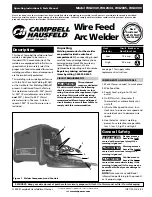
14
- RTD- Ver. 03
D811347_03
INSTALLATION MANUAL
ENGLISH
4)
anti-panic
. The relay of the associated output changes status
if the key is kept pressed for more than 5 seconds. All the keys
of all the transmitters entered in the receiver are automatically
provided with the anti-aggression function, regardless of their
configuration, therefore no key (T1, T2, T3 or T4) needs to be
assigned to the output. Relay commutation lasts 10 sec.
Notes:
The default outputs are configured as monostable.
Only one output can be configured with anti-aggression mode.
In the case where it is necessary to check the mode of an output
configuration, select the output and press the OK key. The receiver
displays the previously set function mode as the first option.
If you try to configure an output which is not provided with a MOP
option module, the “module not present” error message will be
displayed.
Configure RTD:
Allows you to set the general system functions.
Language:
select one of the languages available (Italian,
French, German, English, Spanish).
Password:
use the + and - buttons to enter a password
consisting of 4 digits (from 0 to 9). If a value other than the
default value (0000) is entered, the access password will be
requested for the subsequent configuration attempt. If you do
not wish to protect receiver programming by means of a
password, re-enter default value 0000.
Type of receiver:
select the receiver function mode between
fixed code and variable code (rolling-code); the receiver
default configuration is set to rolling-code mode.
5.1) Transmitter groups
Use menu Add --> Group to enter a large number of transmitters
automatically (the maximum limit being the receiver memory capacity).
The company markets packs containing 100 transmitters, appropriately
programmed and numbered from 01 to 100 (transmitter 100 is identified
by figure 00), which can be entered as groups.
Entering a group simply requires the storage of the first and last
transmitters, all the group transmitters included between these will
automatically be stored in the memory.
Standard transmitters cannot be entered in the group menu.
To enter transmitter groups, proceed as follows:
1)
Move to menu Add --> Group and select the output to be activated.
Select option “all outputs” to have each transmitter key automatically
associated with the corresponding output (T1- Output1, T2 -
Output2 etc.).
2)
The display shows the message “First transmitter” and then
“hidden key”, press the hidden key (P1 - Fig.5) of the first
transmitter (lowest number) you wish to enter.
3)
The display shows the message “key required”: press the Tx key
you wish to associate with the output selected previously.
4)
The display shows the message “Last transmitter” and then
“hidden key”, press the hidden key (P1) of the last transmitter
(highest number) you wish to enter.
5)
The display shows the message “key required”, press the Tx key
of the last transmitter.
Note: the Tx key selected during this phase must be the same as
that selected in point 3.
6)
The display shows the first memory location taken up, confirm by
pressing the “OK” key and the display will show the last memory
location taken up, then press the “OK” key again. In the case
where you wish to cancel a group entered, press the + and – keys
at the same time.
RTD receiver memory locations
In order to maintain some kind of uniformity with the transmitter
numbering, the receiver memory locations are assigned as follows:
1)
If the memory is empty, the first transmitter (ex. 01) is entered in
location 01 and the others follow, as indicated:
01 02 03 04 05 06
--
--
--
--
--
-- 100
RTD
01 02 03 04 05 06
--
--
--
--
--
--
00
2)
If some of the locations are taken up by other transmitters, the first
transmitter (ex. 01) is entered in the first “N01” (101-201-301, etc.)
location available, which is followed by a sufficient number of free
entry locations:
01 02 03 04
05
--
-- 101 102 103 --
-- 200
RTD
01 02 03
--
--
00
3)
If the receiver is empty and the first transmitter has a number other
than 01 (ex. 35), the first transmitter is entered in location 35, and
the others follow:
01 02 03
--
--
--
35 36 37 38
35 36 37 38
--
-- 100
RTD
--
--
00
4)
If some of the locations are taken up and the first transmitter has
a number other than 01 (ex. 35), it is entered in the first “N35” (135-
235-335 etc.) location available, which is followed by a sufficient
number of free entry locations:
--
35 36 37 38 39
-- 135 136 137 --
-- 200
RTD
36
37
--
-- 00
35















































